Left-hand acoustic guitar – what’s the trick?
Guitarists who use a left-handed instrument typically have less flexibility in changing or sharing instruments, this is because many artists fret with the right hand while strumming or picking with the left, and the entire action typically requires a different guitar. By example, right handed players use the body of the guitar and its strings in a conventional order without needed to move their hand around all that often. One way to imitate a left-handed guitar is to string and right-handed acoustic upside down… but obviously this isn’t very efficient for any musician. Neck types also differ between right-handed and left-handed guitars, as well as the string placement, body, and tuners which are located on the opposite side of the headstock.
Put simply, not many right-handed players can’t easily play a lefty’s guitar, and likewise in reverse.
Acoustic guitar body types explained
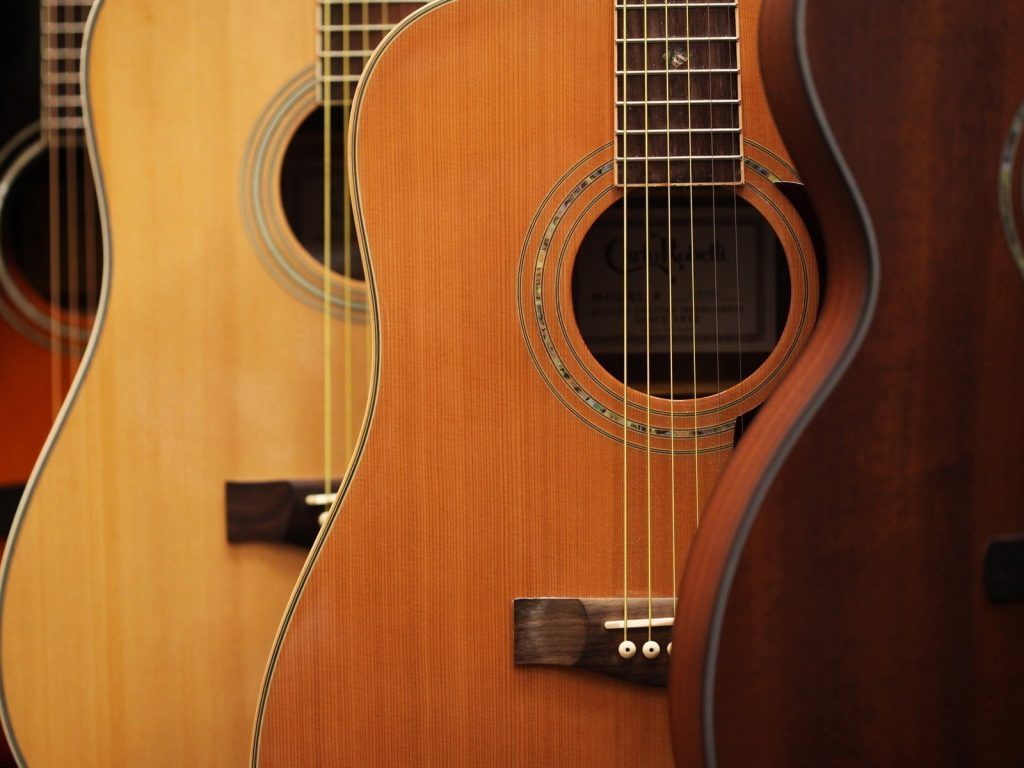 From what you’ll see on our list, the dreadnaught guitar shape is easily the most popular shape for an acoustic guitar. Take for instance the Yamaha FG820L, as you can see this guitar features a larger body. What this dreadnaught shape does is produce louder sound due to the deeper soundbox, and this sound will also sound more bassy and boomy. For smaller individuals however, the dreadnaught design has the drawback of being one of the heaviest acoustic body types.
From what you’ll see on our list, the dreadnaught guitar shape is easily the most popular shape for an acoustic guitar. Take for instance the Yamaha FG820L, as you can see this guitar features a larger body. What this dreadnaught shape does is produce louder sound due to the deeper soundbox, and this sound will also sound more bassy and boomy. For smaller individuals however, the dreadnaught design has the drawback of being one of the heaviest acoustic body types.
Other types include Grand Concert Guitars (or GC’s) which have a smaller body style with one of the thinnest soundboxes for a quieter noise that has an improved major scale. The Grand Auditorium Guitar (GA) which is a little bit wider and deeper than the GC and includes a convex back panel to increase the space of volume the instrument can produce (also offers a more balanced tone overall). The jumbo guitar, which simply means its an even bigger dreadnaught and therefor best at projecting a loud and full bass that’s ideal for outside play and larger environments and concert halls.
Some even lesser known styles which aren’t necessarily distinguished by their body are acoustic guitars with classical nylon strings – typically these do have a wider neck and fatter fingerboard – that create an old school sound. Travel guitars and small guitars, like the Taylor GS Mini. And finally, cutaway guitars which can have a portion of the body ‘cut away’ to give room for more frets and increase the tone of the instrument.
Price tag
The price tag of an acoustic guitar will rise and fall based on its hardware and wood types. Typically, mahogany body guitars with rosewood fretboard and soundbar are the most affordable, and therefore these also include a lot of great extras which you can use to greatly improve the way you play – consider the budget friendly Takamine GD10LHNS, which even includes a spruce wood top. Other guitars which are more expensive offer a wider range of unique sound, control, power, or all three based on the value of their hardware and the value of their wood type. For instance, one of the higher priced guitars on our list, is also one of the better left-handed guitars on the market, the Yamaha FG820L.
Features to consider while buying the best left-handed acoustic guitar
 Many of the following features you’ll have seen listed in the product reviews above. In this section we further elaborate on these features and how they change the dynamics of an instrument.
Many of the following features you’ll have seen listed in the product reviews above. In this section we further elaborate on these features and how they change the dynamics of an instrument.
Tonewood for your music
Spruce wood sets the standard wood use for tops because its high rigidity combined with lightweight feel make for a natural high velocity sound; it has direct tone capable of retaining clarity – meaning its ideal for sustained notes. Cedar, when used, creates a balanced warm sound and it’s a wood particularly favored by fingerstyle players for its quick and rich response.
Mahogany actually has one of the lowest response rates due to its considerable density, however its often mahogany guitars which offers than strong ‘punchy’ tone we associate with blue music. Likewise, Maple is very similar to mahogany, except as it ages it tends to be less predictable (sound-wise) and create unique tonal characteristics. Finally, Rosewood is known for its high response rate – this is why you so often see rosewood parts in addition to full mahogany bodies – rosewood offers a wide range of overtones and overall has one of the darkest tone sounds.
Strings
For acoustic guitars gold-colored bronze bass strings are possibly the best hardware for your sound (preferably with an 80/20 rating, meaning 80% copper and 20% bronze) because they offer a bright timbre and louder volume. Most of the strings that come with a guitar are lower quality, more likely to break, and not as punchy as you’d like.
However, the ideal string might also depend on the type of music you are trying to create If you like to play pop, rock, or country music, the best left-handed acoustic guitar for beginners like you should have a steel string. On the other hand, if you play a lot of classical music, a nylon stringed guitar is perfect for you. The difference between the two is the sound produced. For strings that come with the guitars listed, none are better than the hardware included in purchase of the Ibanez Artwood AC340.
As for the number of strings, you might opt for a more advanced, twelve-string guitar, which will allow you for fantastic musical experiments.
Neck & Scale
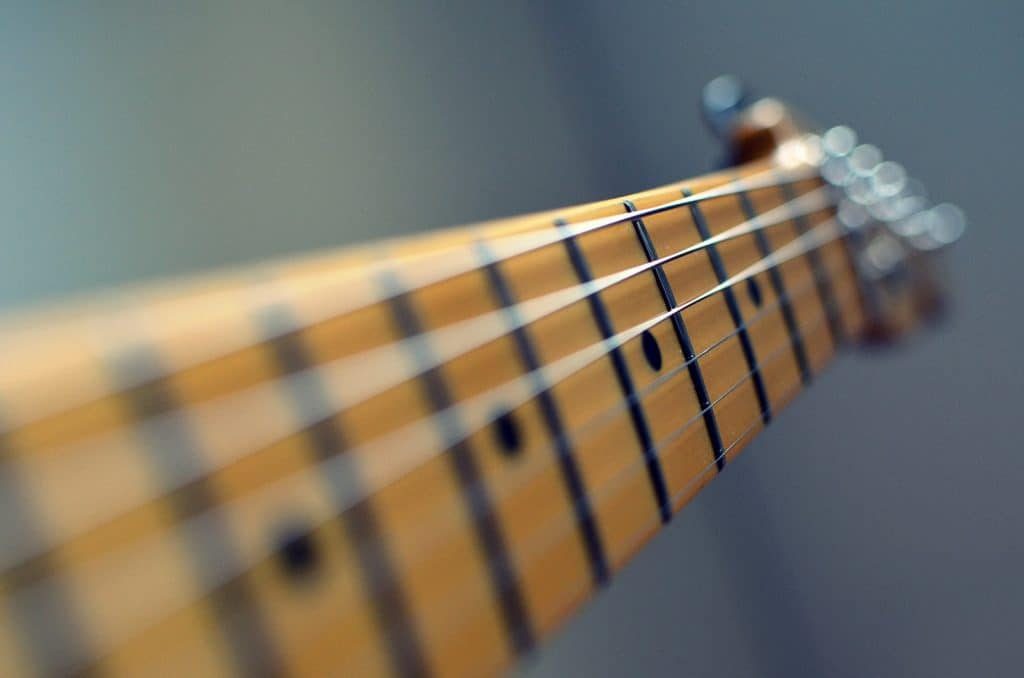 A guitar neck contains something called the ‘truss rod’, typically made of metal. It’s this rod that prevents your instrument from bowing and twisting against string tension and environmental factors. As you adjust a truss rod you correct any intonation issues; this can be done either at the headstock itself or just inside the guitar at the base of the neck. The fretboard runs along the top side of the neck (also called the fingerboard) and is usually a separate piece of wood glued into place and constructed most commonly from ebony or rosewood.
A guitar neck contains something called the ‘truss rod’, typically made of metal. It’s this rod that prevents your instrument from bowing and twisting against string tension and environmental factors. As you adjust a truss rod you correct any intonation issues; this can be done either at the headstock itself or just inside the guitar at the base of the neck. The fretboard runs along the top side of the neck (also called the fingerboard) and is usually a separate piece of wood glued into place and constructed most commonly from ebony or rosewood.
Thin strips of metal, called frets, are embedded in the wood along half-step increments across the 12-tone scale to show where different notes are played. Most guitar fretboards have inlaid dots or symbols on the odd-numbered frets, starting with the third – excluding the 11th and 13th in favor of the 12th, or the octave. Thus, the longer the scale, often the longer the fretboard. The shorter the neck, the shorter the scale; although this is not the case with the Taylor GS Mini.
Solid or laminated?
Put simply, laminated guitars don’t resound as well and therefore offer a thinner sound, that’s why you should always opt in favor of a full body solid guitar. All the instruments on our list fit this specification and therefore offer the full range of noise and motion as they should be capable of creating with their strings, wood tonality, and other features.
Bridge
Put simply, the bridge is a piece of wood placed below the soundhole, it’s the thing which anchors the strings and transfers what you play on them through vibrations to the hollow body of the guitar. Bridge pins connect into the holes on the bridge to anchor the strings in place. Changing the wood type of the bridge will likewise change how vibrations are translated to the guitar, whether those vibrations have a slower reaction before becoming sound, whether they’re deeper, etcetera. One of the best wood types for translating vibrations the way they should be heard in quick succession and at the note of the fret you’re playing is rosewood. For this reason, the Yamaha FG820L and Takamine GD10LHNS can offer very similar controls and punchy notes, even if the music you play on them is very different.
Size
The size of a guitar and the shape of its neck varies by manufacturer, so it makes sense to search for an instrument that you find easy to play. There are many types of guitars, from classical guitars that have been around for many years, to electric guitars used to play rock and jazz. Each type has its own unique way of expressing sound based on a variety of features, the foremost being the neck length/shape and the second being the wood type used throughout the guitar. At first when starting out with a left-handed guitar, a smaller size might be a better fit just because your fingers will get used to it easier; for this instance, the Taylor GS Mini might be the best option for a beginner.
Accessories
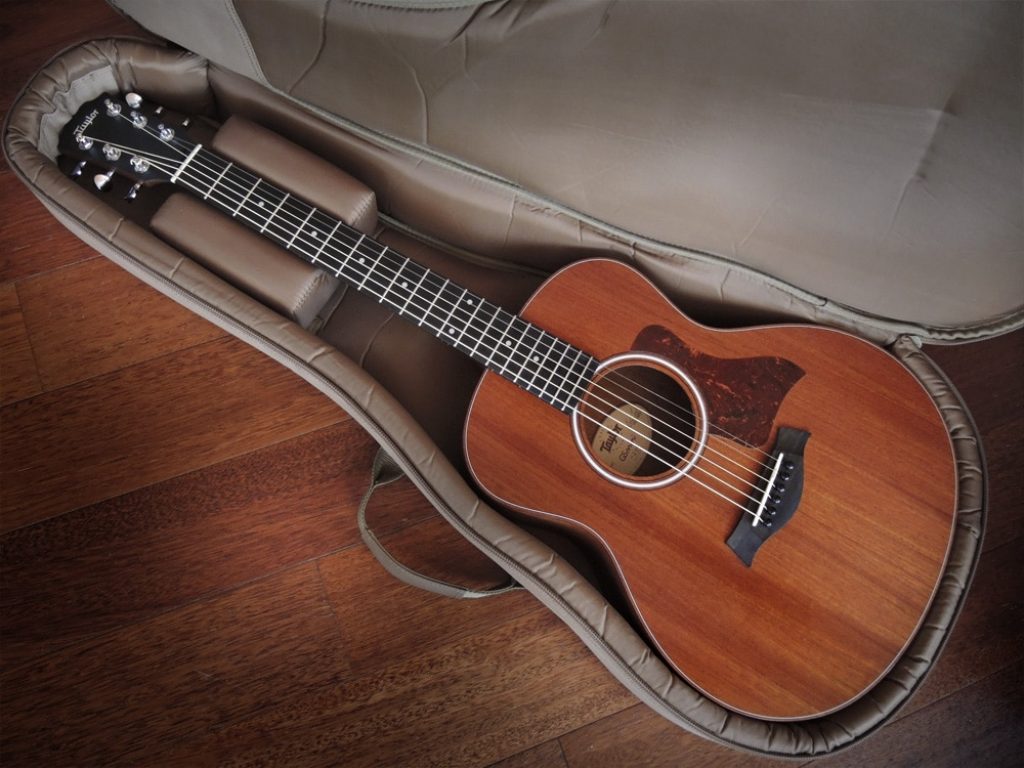 Clip on tuners are a must because they make tuning more exact and faster while you’re on the go. Capotasto’s to fit over the head of your guitar when changing the sound – though make sure the one you purchase is sized for your specific instrument. And if your guitar doesn’t come with one, then definitely consider getting a protective hard case or a gig-bag for protecting and carrying your guitar everywhere you go.
Clip on tuners are a must because they make tuning more exact and faster while you’re on the go. Capotasto’s to fit over the head of your guitar when changing the sound – though make sure the one you purchase is sized for your specific instrument. And if your guitar doesn’t come with one, then definitely consider getting a protective hard case or a gig-bag for protecting and carrying your guitar everywhere you go.
Warranty
Warranties will vary per manufacturer and distributor of each guitar, but based on the price of your instrument you typically want a 1-2-year warranty that covers the body of the guitar if not the body and hardware.






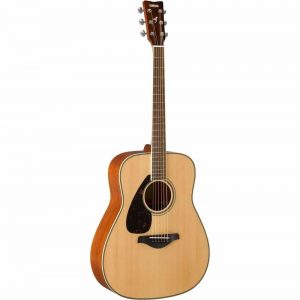




























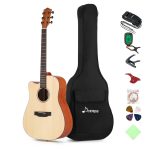


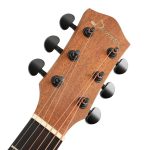
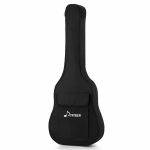
 From what you’ll see on our list, the dreadnaught guitar shape is easily the most popular shape for an acoustic guitar. Take for instance the
From what you’ll see on our list, the dreadnaught guitar shape is easily the most popular shape for an acoustic guitar. Take for instance the  Many of the following features you’ll have seen listed in the product reviews above. In this section we further elaborate on these features and how they change the dynamics of an instrument.
Many of the following features you’ll have seen listed in the product reviews above. In this section we further elaborate on these features and how they change the dynamics of an instrument. A guitar neck contains something called the ‘truss rod’, typically made of metal. It’s this rod that prevents your instrument from bowing and twisting against string tension and environmental factors. As you adjust a truss rod you correct any intonation issues; this can be done either at the headstock itself or just inside the guitar at the base of the neck. The fretboard runs along the top side of the neck (also called the fingerboard) and is usually a separate piece of wood glued into place and constructed most commonly from ebony or rosewood.
A guitar neck contains something called the ‘truss rod’, typically made of metal. It’s this rod that prevents your instrument from bowing and twisting against string tension and environmental factors. As you adjust a truss rod you correct any intonation issues; this can be done either at the headstock itself or just inside the guitar at the base of the neck. The fretboard runs along the top side of the neck (also called the fingerboard) and is usually a separate piece of wood glued into place and constructed most commonly from ebony or rosewood. Clip on tuners are a must because they make tuning more exact and faster while you’re on the go. Capotasto’s to fit over the head of your guitar when changing the sound – though make sure the one you purchase is sized for your specific instrument. And if your guitar doesn’t come with one, then definitely consider getting a protective hard case or a gig-bag for protecting and carrying your guitar everywhere you go.
Clip on tuners are a must because they make tuning more exact and faster while you’re on the go. Capotasto’s to fit over the head of your guitar when changing the sound – though make sure the one you purchase is sized for your specific instrument. And if your guitar doesn’t come with one, then definitely consider getting a protective hard case or a gig-bag for protecting and carrying your guitar everywhere you go.









